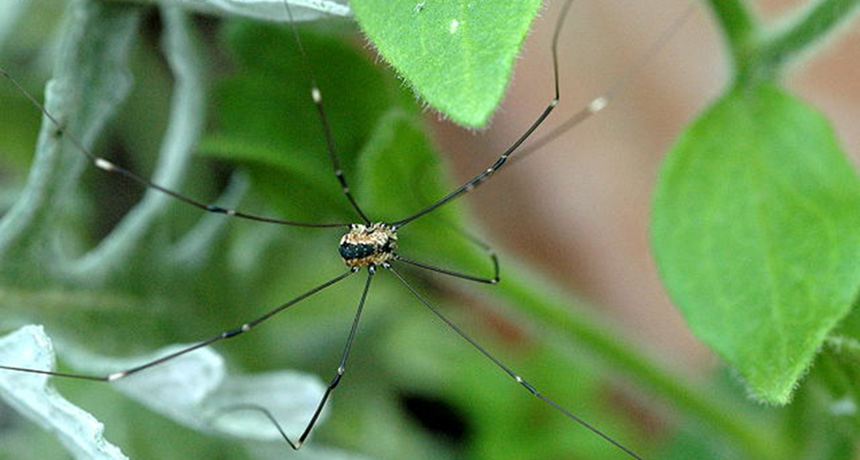The weird mating habits of daddy longlegs

COLUMBIA, Mo. — If you find a daddy longlegs in your house, don’t be scared. “Daddy longlegs are actually pretty docile animals when it comes to interacting with humans,” says evolutionary biologist Kasey Fowler-Finn, who studies the arachnids at St. Louis University. Specifically, she studies daddy longlegs sex. She is using this common group of arachnids (they’re not spiders) to explore how mating behaviors can be shaped by evolutionary forces.
Daddy longlegs — which can be found in forests, in leaf litter, on tree trunks and, of course, in your garage in eastern North America — are a group of harvestmen with elongated legs. And like all harvestmen, their second pair of legs, which is used in sensory exploration instead of walking, is particularly long.
But what makes daddy longlegs especially interesting is what happens when they mate. “Most of us just think ‘ew’ when we see them, but they have this really fascinating suite of [mating] behaviors,” Fowler-Finn said July 31 at the 53rd Annual Conference of the Animal Behavior Society. “The same basic stuff happens with all species in the clade, but the details vary quite a bit.”
The mating ritual starts with individuals bumping into each other (scientists don’t yet know how males and females find one another). “Then shortly thereafter, males will attempt to engage the females in what’s called a ‘mating embrace,’” Fowler-Finn said. “They hook their pedipalps [a type of appendage on the front of the arachnid] behind the female’s sensory legs … and then there’s a bunch of back and forth between males and females that varies in duration across species.” Mating can last for 15 seconds in some species, and three to four hours in others. The male then delivers a nuptial gift and his ejaculate, and the pair separates.
There can be a lot of aggression during all of this, with males and females biting each other and even losing legs during mating. And this, too, can vary from species to species. Leiobunum vittatum encounters, for instance, are almost always violent, while L. aldrichi matings are aggressive only about half of the time.
L. aldrichiis one of Fowler-Finn’s favorites. “The male actually grabs the female’s second leg … and then they shake them by one leg,” she said. “And, in fact, this is so particular to the second leg that males who initially grab other legs on the female will continue to search until they find that second leg. So there’s something really cool going on here.” What that might be, though, is a mystery.
Fowler-Finn is still working out whether characteristics of the various daddy longlegs species can predict their mating styles. But she noted that she and her colleagues are finding a lot of variation in behavior not just across species but also by geographic area. She suspects that as she and her team describe these differences, they are going to find evidence for plenty of new species to scare the arachnophobes out there.